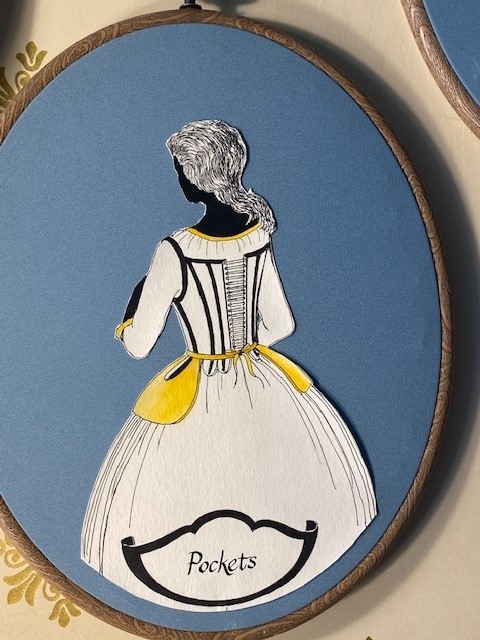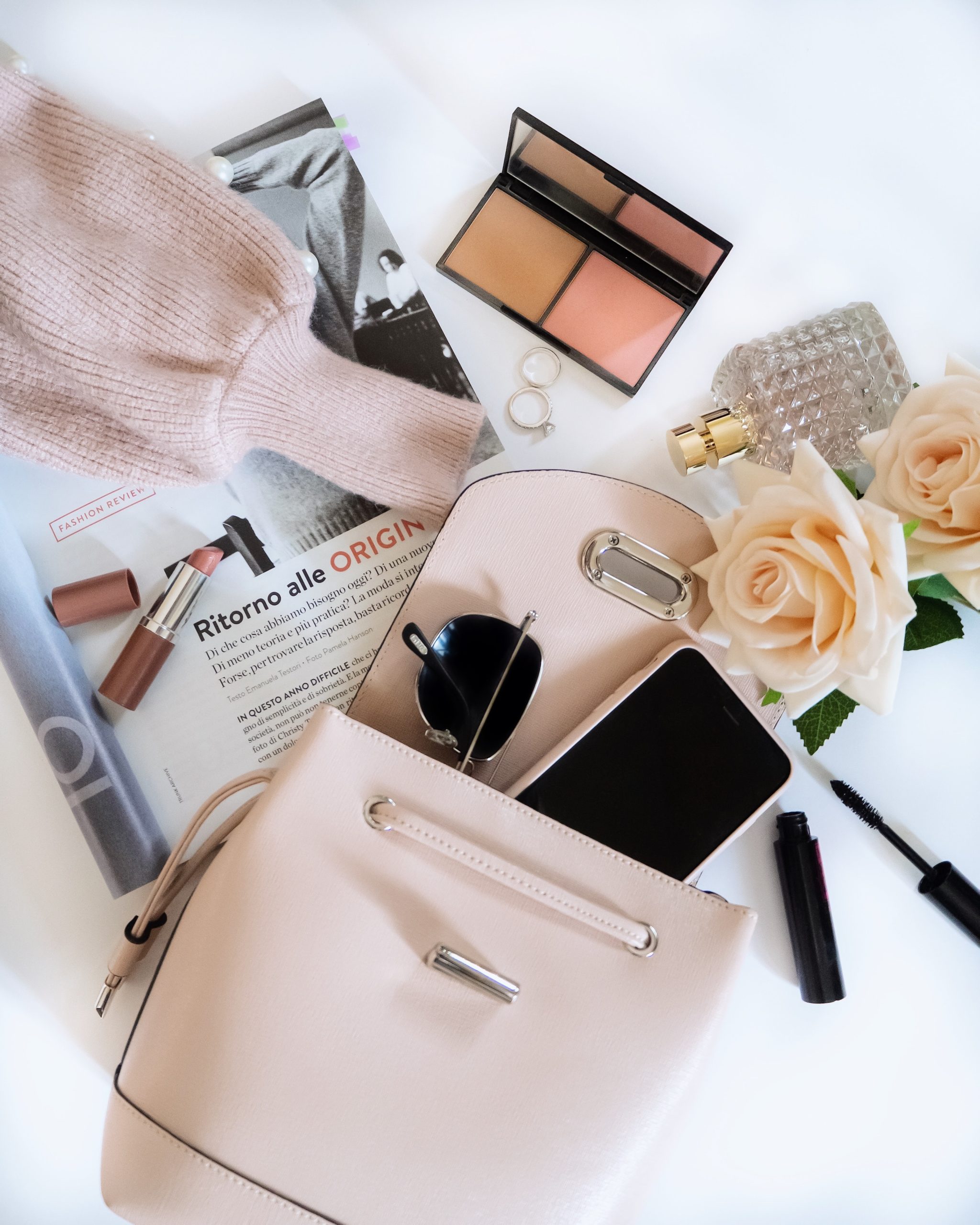This month the discussion topic was ‘Pockets, handbags and luggage, a history of, type of and design. Holiday packing – what you’ve taken, what did you forget, what do we need and how can we carry it?’ and involved a little bit of research, something new for us as a group! Thank you to the Fox and Duck in Buntingford for reserving a quiet area in the pub for us to sit.
We started by considering how the contents of our handbags have changed over the last three years. We heard how the average number of items in our handbag reduced from fourteen in the 1990s to six in 2014.
According to a survey of 3000 British women, items that were in our handbags in the 1990s and remain in our handbags today are painkillers, underwear, spare shoes, makeup, money and keys (some NWR members noted that they have never carried some of those items!). According to the survey, back in the 1990s we also carried a music player (such as an iPod), a book, cheque book, Filofax and an A-Z to find our way around. We noted how a number of those items have now been replaced by an app on our phone and we carry less cash around, if at all.
Next we stepped back in time to hear about the origins of pockets. One member recalls when young singing the song…
Lucy Locket lost her pocket
Kitty Fisher found it;
Not a penny was there in it,
Only a ribbon round it.
…but never considered how Lucy could have lost her pocket. Only as an adult did she ponder this, as aren’t they usually stitched into your clothes? After some investigation she discovered how pockets in the 17th and 18th centuries were not sewn into women’s gowns. Instead, women had a pair of pockets – or a single pocket – attached to some ribbon which was tied around their waist. They were often beautifully embroidered, as shown in the pictures below taken at the National Trust’s Croft Castle and contributed to the liberation of women, who were now able to hold their own items.



Have you ever wondered what the little pocket within the pocket of your jeans is for? When Levis made the first pair of jeans in 1879 it was designed as a place for men to put their pocket watch in!
We also heard that in the 1900s handbags were originally men’s hand luggage, but as women’s bags became larger and more complex the term was attached to them. In the 20th century handbags became symbols of a woman’s wealth and worth in society. Men’s bags remained functional, like briefcases.
Luggage was first added to the English dictionary in the 16th century and originates from the word ‘to lug’ meaning ‘to pull’. It was popularised in the 17th and 18th centuries as affluent members of society travelled and wished to bring their possessions with them. These possessions needed to be protected from damage in the ship and kept out of the rain when servants brought them from the ship to their hotel. The 19th century brought mass tourism and luggage was more modest. Surprisingly, when wheels were first introduced on luggage it wasn’t popular amongst men due to pulling a suitcase being seen as ‘not macho’!
We finished the meeting with a discussion about the difficulties of packing the right things when going on holiday and how we often bring too much. Then followed plenty of time for a chat and get to know one another. We look forward to the next meeting in September.
Feature photo by LEISARÀ Creative Studio on Unsplash


